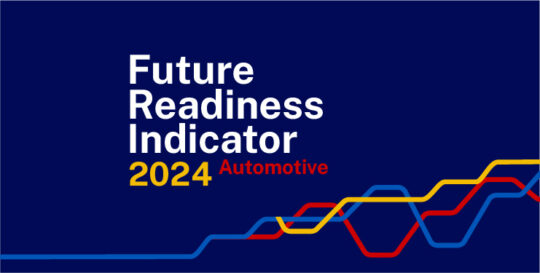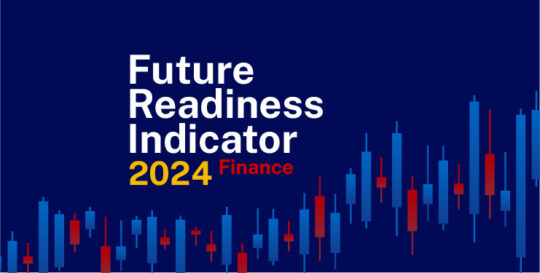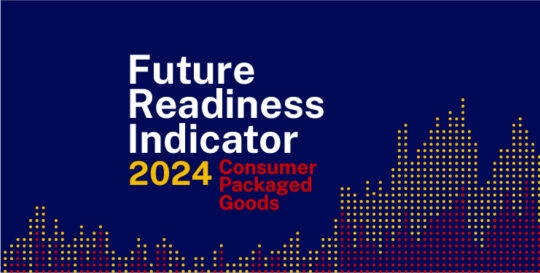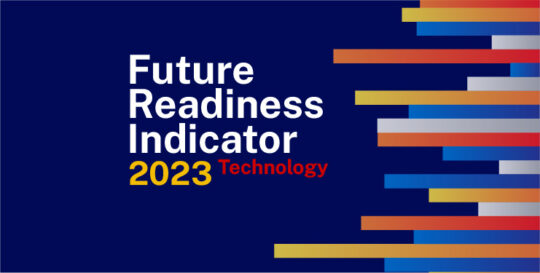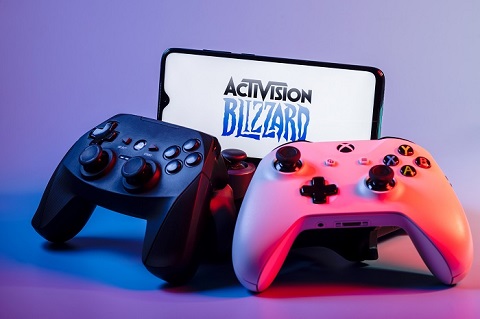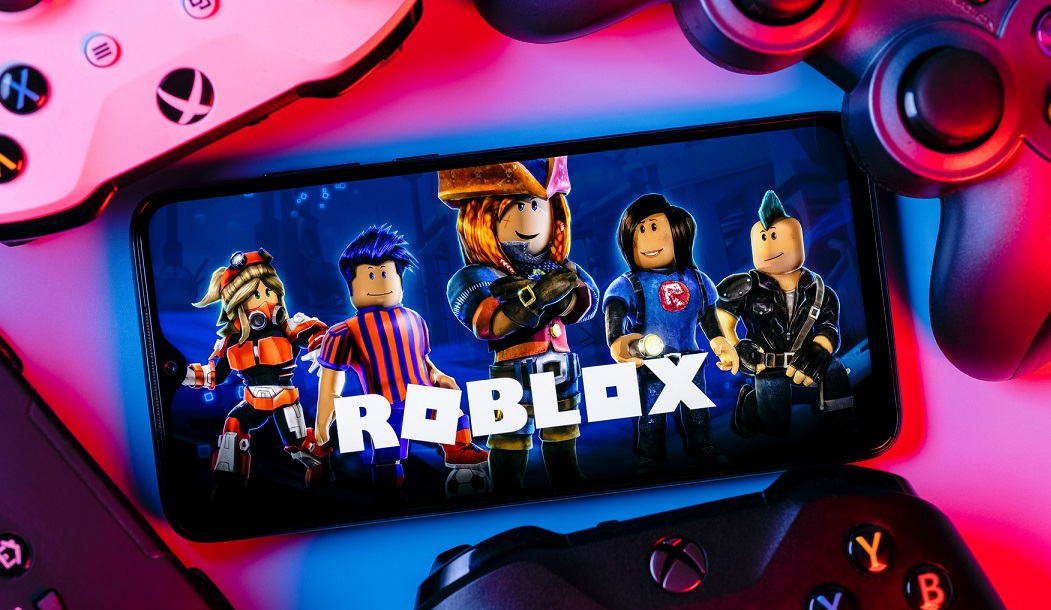IMD business school for management and leadership courses
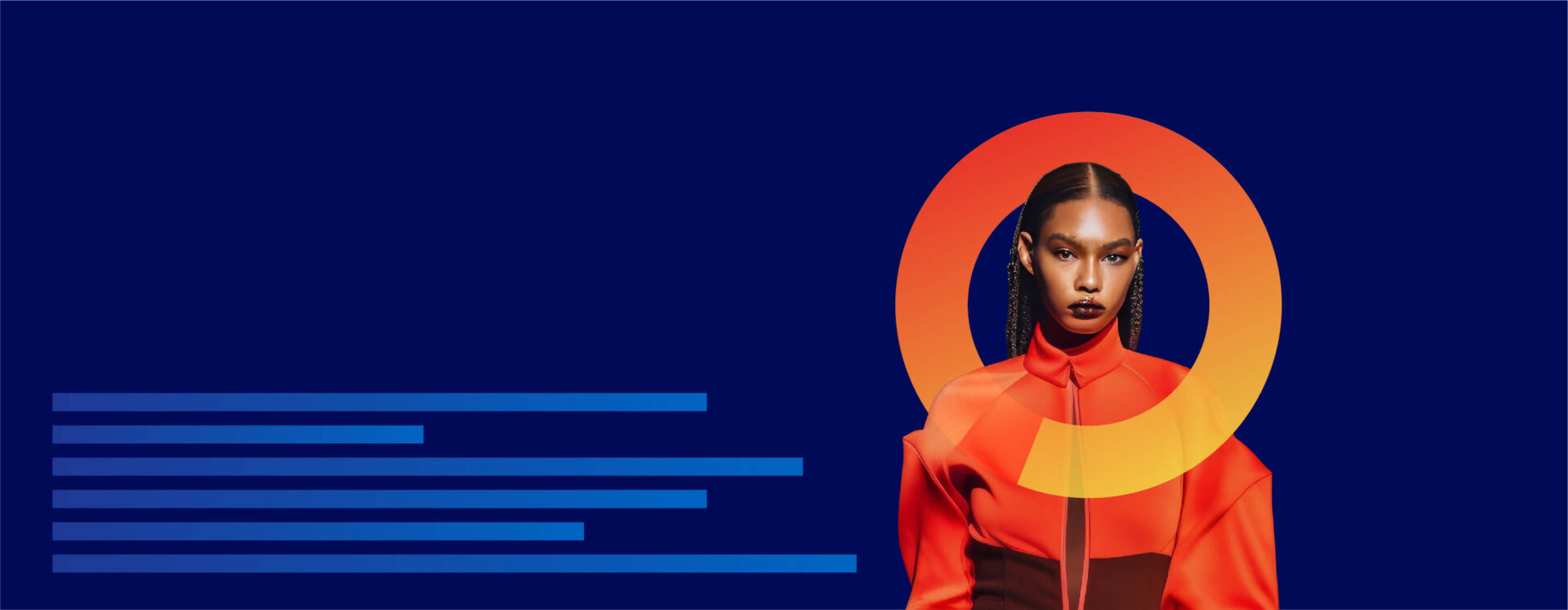

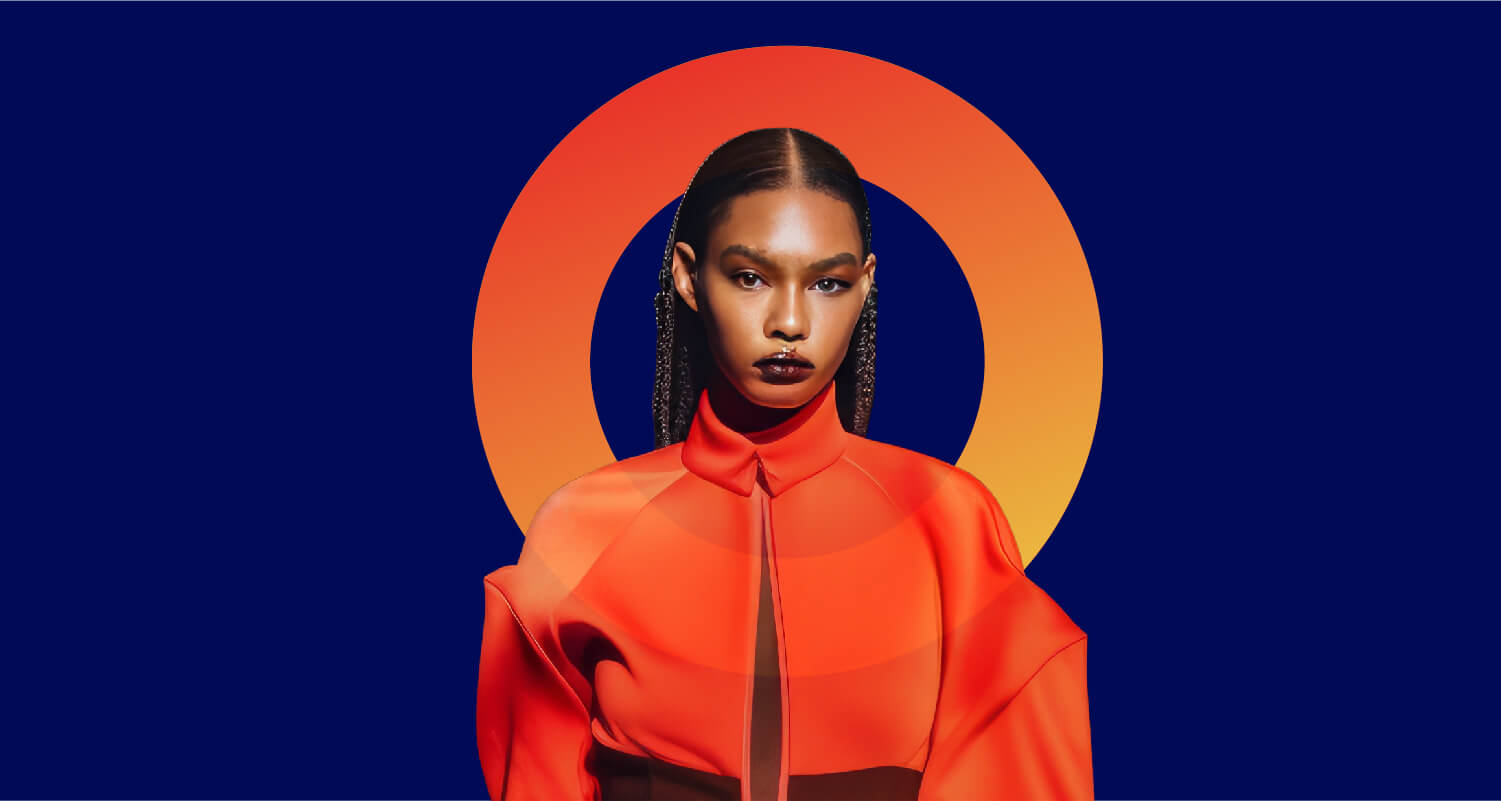
By Howard Yu and the Center for Future Readiness
Future Readiness Indicator
By Howard Yu and the Center for Future Readiness
Fashion industry future-readiness indicator 2023
How top brands are shaping the fashion industry’s 2024 landscape
Future readiness has emerged as a critical measure of success in the fashion industry. It signifies an organization’s ability to anticipate, adapt to, and capitalize on emerging trends, technologies, and shifts in consumer behavior. Just as the technology industry has embraced this concept, the fashion sector is also undergoing significant changes.
The fashion industry has seen remarkable shifts in the aftermath of the pandemic. Traditional fashion markets have been reshaped by the rise of fast fashion and the surge in online shopping, especially on platforms like Amazon, revolutionizing retail. Social media has become a powerful platform for fashion influencers and brands alike. Sustainable and eco-conscious practices have gained ground, influencing consumer choices.
As we look toward 2024 and beyond, new fashion trends and business models are poised to reshape the industry. From virtual fashion shows to augmented reality (AR) shopping experiences, digital innovation will be central. Sustainability will not only persist but also become standard practice.
To assess the fashion industry’s future readiness, IMD’s Future Readiness Indicator is an essential tool. Much like it does for the automotive sector, IMD’s initiative offers insights into how the fashion industry tackles innovation, sustainability, and market evolution. This indicator provides a comprehensive assessment of the industry’s readiness for the challenges and opportunities ahead, empowering fashion leaders for success in their industry.
What does a future-ready company look like?
The concept of being “future-ready” in the fashion industry denotes a company’s or individual’s readiness to not only survive but thrive in an ever-evolving environment. It encompasses a proactive stance towards understanding, embracing, and harnessing emerging trends, technologies, and market dynamics. A future-ready company is one that anticipates change, adapts swiftly, and seizes opportunities that arise from shifts in the fashion landscape and broader society.
Technology plays a pivotal role in achieving future readiness. A future-ready fashion company leverages technology to enhance its operations, from design and manufacturing to distribution and marketing. For instance, it may employ data analytics to gain insights into consumer preferences and market trends, enabling more informed decision-making. Technology facilitates agile and efficient supply chain management, reducing lead times and minimizing waste.
In essence, a future-ready fashion company is characterized by its dedication to continuous learning, innovation, and strategic planning. It strives to remain agile and resilient in the face of change, positioning itself at the forefront of industry advancements. By embracing technology and adopting forward-thinking strategies, these companies ensure their competitiveness and relevance in an industry that is undergoing rapid transformations.
Global fashion industry rankings
Here is our 2023 ranking for luxury fashion and sportswear brands.
Click on the company’s name for key factors that make up the score. Drag the slider to adjust the year.
Soaring inflation and geopolitical tensions have created a complex landscape. Our spotlight falls on the most future-ready fashion brands, distinguishing themselves by embracing tomorrow’s trends.
The latest 2023 roundup saw Nike solidify its position at the forefront, with Hermès and Kering following. LVMH and Richemont consistently hold strong in the top echelons, emphasizing their robustness in luxury’s digital transformation and enduring brand value. Zalando’s rise to the fifth spot in 2023 from seventh in 2022 reflects its prowess in e-commerce and responsiveness to shifting consumer behaviors.
Over the past three years, the IMD future readiness rankings have showcased notable fluctuations among leading brands, reflecting a sector in flux. We employ an objective, data-driven approach that considers both statistical distribution and natural inflection points within the scores. Read more about our methodology. All said, top-performing brands are better prepared than others to follow trends.
Nike
Nike, a titan in the global fashion industry, consistently ranks high in the Future Readiness Indicator, a testament to its innovative strategies and brand strength. At the core of Nike’s success is its ability to blend cutting-edge design with advanced technology, revolutionizing sportswear and athleisure.
Nike’s foray into sustainable fashion and smart apparel underscores its adaptability in a rapidly changing industry. The company’s commitment to environmentally friendly practices and its exploration of digital platforms for customer engagement demonstrate a proactive approach to future trends.
Nike’s strategic initiatives, like integrating artificial intelligence (AI) in product development and leveraging AR for immersive shopping experiences, further showcase its pioneering spirit. This blend of innovation and customer focus solidifies Nike’s reputation as an industry leader, continually setting new benchmarks in the fashion world.
Hermès
Hermès, renowned for its timeless luxury and craftsmanship, holds a prominent position in the Fashion Industry Future Readiness Index. Its enduring appeal lies in the meticulous attention to quality and design while also embracing modernity.
Hermès’ approach to blending traditional craftsmanship with modern trends, like incorporating sustainable materials and practices, exemplifies its ability to evolve without losing its essence. This balance is crucial in an industry where heritage and innovation must coexist.
The strategic expansion into digital marketplaces and the integration of technology into customer experiences highlight Hermès’ foresight. Its commitment to maintaining exclusivity while adapting to new consumer preferences underscores its unique position in the luxury segment, making Hermès a model of elegance and future readiness.
Kering
Kering, a powerhouse in the high-end fashion sector, consistently demonstrates its future readiness, currently ranking impressively in the industry index. Its portfolio, featuring brands like Gucci and Saint Laurent, represents a blend of iconic style and forward-thinking business strategies.
Kering’s focus on sustainable fashion and ethical sourcing reflects its commitment to environmental stewardship and social responsibility, key factors in today’s market. Its initiatives in reducing carbon footprint and promoting circular fashion are setting new standards in the industry.
Moreover, Kering’s embrace of digitalization, from e-commerce to virtual showrooms, showcases its adaptability in an increasingly digital world. This strategic digital engagement, combined with a steadfast commitment to luxury and quality, positions Kering as a visionary leader in the fashion industry.
What’s shaping the future of fashion?
In the ever-evolving landscape of the fashion industry, several key factors are shaping its future trajectory. These factors encompass economic and market dynamics, cultural influences, and sustainability and ethical practices. Understanding how these elements interplay and impact fashion companies, consumer demand, and fashion design in New York, London, and other fashion hubs is essential for staying ahead in the dynamic world of fashion.
Let’s explore each of these critical aspects to gain insights into what’s driving the future of the fashion industry.
1. Economic and market dynamics
Inflation and geopolitics are affecting consumer spending and impacting operational costs. Prices for cotton cashmere and input materials have been rising. Still, the luxury sector remains resilient due to affluent consumers. Meanwhile, the broader market faces slower growth, with low-income households cutting back.
Hermès’ sales rose significantly in the third quarter, outperforming even the luxury sector. It experienced a 20% sales growth in the Americas and an 18.1% increase in Europe. The brand’s performance indicates robust demand for its high-end products like the Birkin handbag.
Meanwhile, the cost of digital marketing is increasing, while platforms like Google and Facebook have been changing their algorithms, making organic reach less reliable. Together with ad-block technology and data privacy regulation, brands are reassessing direct-to-consumer strategies to balance it with wholesale and retail partnerships. It is under this context that Nike outshines everyone else.
The company’s revenue for the third fiscal quarter reached $12.4 billion, surpassing projections of $11.48 billion and representing a 14% increase from the previous year. This growth was driven by strong performance in direct sales, including its website and owned-and-operated stores, with member buying frequency increasing and store sales growing across all geographies. Nike’s digital sales also rose by 20%. CEO John Donahoe attributed this success to Nike’s Consumer Direct Acceleration strategy.
2. Cultural influences
K-pop is all the rage. But more than just music icons, these artists – like BTS and Blackpink – are also fashion trendsetters. LVMH enlisted Korean stars as brand ambassadors, particularly in China, to leverage their immense popularity to attract younger millennial and Gen Z consumers.
Gucci, part of the Kering group, has worked on collaborations like the “Kai x Gucci” capsule collection, which sold out quickly after its launch. Saint Laurent, another Kering brand, has engaged Blackpink’s Rosé as its muse since 2020, featuring her in key collection shoots. But the industry is also seeing a shift towards gender-fluid fashion, reflecting changing societal attitudes. They are redefining fashion aesthetics and preferences, pushing brands to adapt their designs and marketing.
3. Sustainability and ethical practices
Consumers are again pushing for sustainable fashion choices. The rise of Resale-as-a-Service (RaaS) platforms offers shopping and selling pre-owned items. Brands now must demonstrate genuine, credible changes in their practices to counter green-washing claims with greater accountability.
Hermès’ commitment to reducing greenhouse gas (GHG) emissions involves setting science-based greenhouse gas (GHG) emission reduction targets, validated by the Science-Based Targets initiative (SBTi). This aligns with the growing emphasis on sustainability and ethical practices seen in the fashion industry in recent years.
Efforts include using alternative fuels, optimizing packaging, and implementing alternative transportation methods. The luxury brand is also actively involved in global initiatives like the Fashion Pact and the UNFCCC Fashion Industry Charter for Climate Action, demonstrating increased transparency and a holistic approach to tackling climate change.
All things considered, supply chain disruptions are driving the need for new manufacturing models, including nearshoring and digital enhancements. Brands are also exploring new channels like the metaverse, utilizing rental channels and off-price retailers. That’s why future-ready companies are constantly realigning their structures to focus on sustainability, NFTs, and digital acceleration. These are the trendsetters who move forward into 2024.

